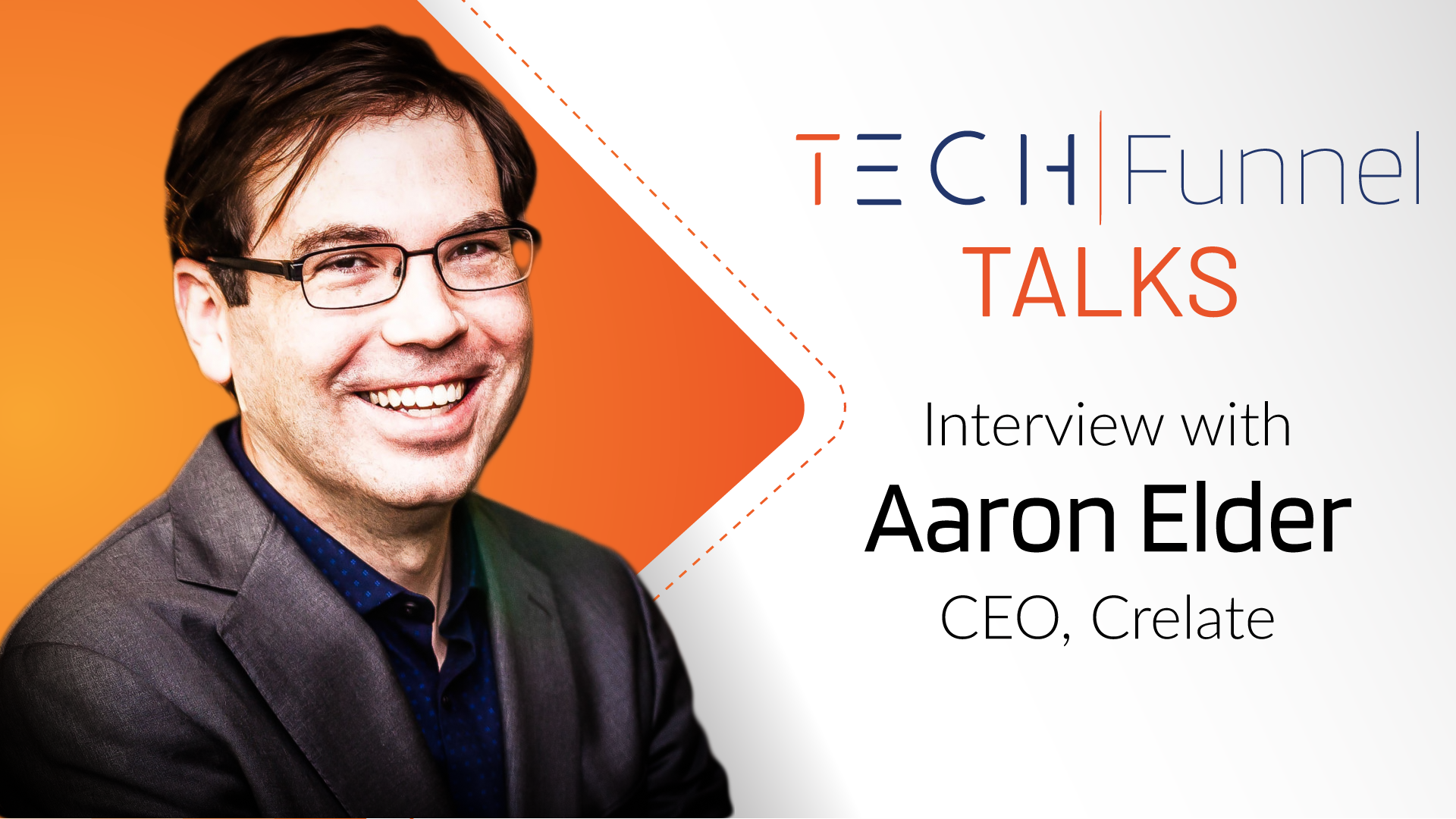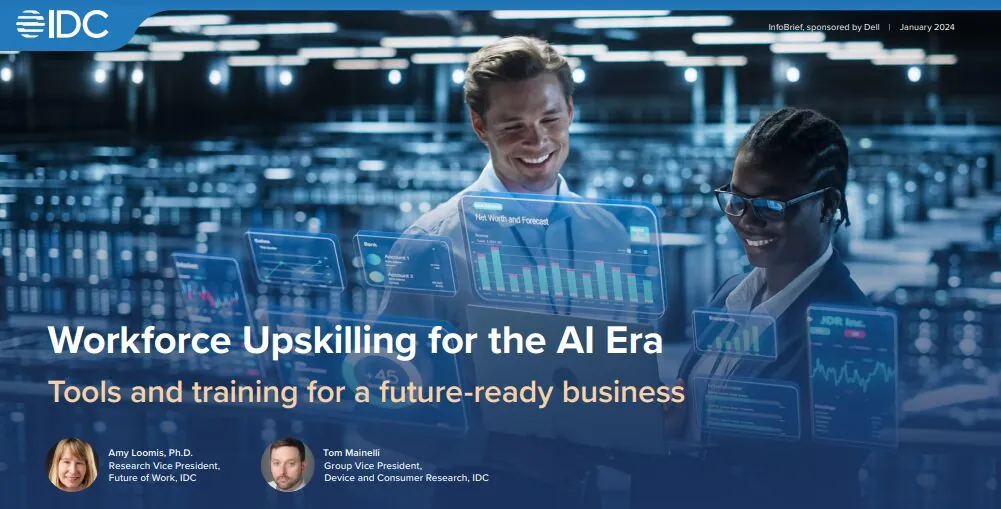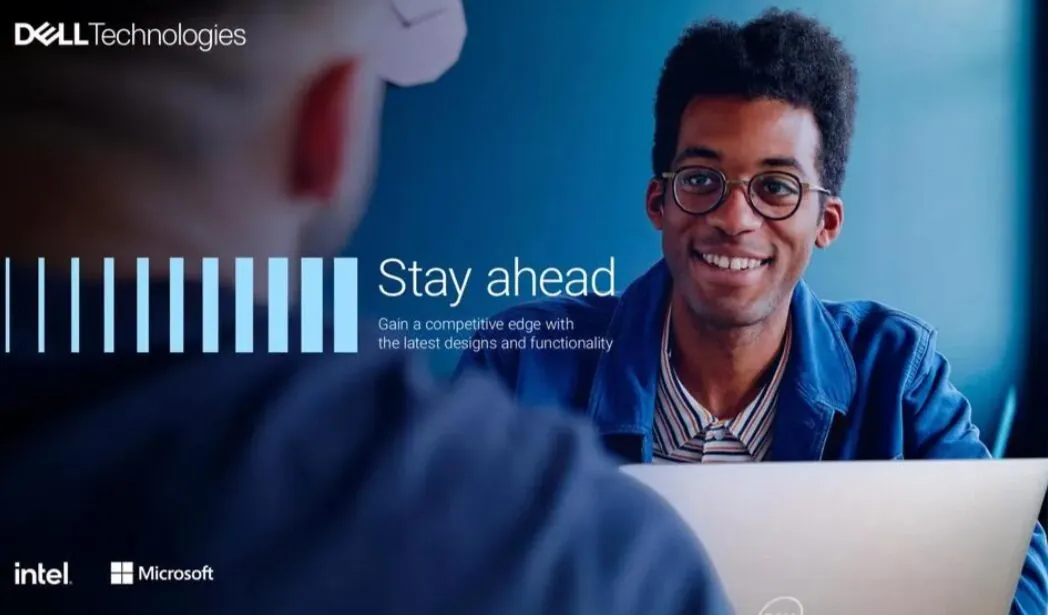Aaron Elder is the CEO and co-founder of Crelate where he brings more than 25 years of experience in product development and technology consulting and was a lead architect in building Microsoft Dynamics CRM, one of the largest CRM platforms in the world. Aaron has spent most of his career hiring and growing developers, in both the enterprise and start-up world, with much of that time in niche technology fields. Learn more about Crelate. Connect with Aaron here.
In this conversation, Aaron Elder shares insights on modern recruitment and how Crelate is filling a need in the talent and human resources industry.
- TechFunnel: Tell us more about Crelate, the company’s journey, and what inspired the creation of this platform?
Aaron Elder: I’ve been developing CRM and business platforms for most of my career. After leaving Microsoft, where I was a lead application architect for Dynamics CRM, I went to co-found a consulting firm focused on implementing this platform in the real world. Growing this business from a few guys, trying hard, into a 150 or so person firm that ultimately sold to Avanade / Accenture Federal was one of the hardest but most fun things I’ve ever done.Our business, like many consulting companies, is half staffing and half consulting and it’s always recruiting.
At its core, talent-centric businesses, be it traditional agencies, temp, staffing, consulting, whatever – ultimately, they are trying to find opportunity and align it with talent. That talent may be W2’s on their bench, a contractor, or someone new that they have to go finds.
What I found most enjoyable about this journey though was the people and lives that our business touched. We made a real point of supporting career switchers and giving people the chance to grow and do something great. I was less interested in where people had been, and more interested in where they were going. And if they were going to put in the work to get there. If so, we were ready to invest and create that win-win situation.
Crelate really came out of this journey. Agencies tend to be relatively small; they don’t always have the resources to have a CRM and an ATS, let alone the resources to get these two things talking to each other. The gap is filled with lots of people and spreadsheets. This was true at our firm when we sold to a mid-market firm and then later sold to the largest of the large firms. My co-founders and I saw a real need for software designed from the ground up for agencies and talent-centric businesses.
- TF: What gaps do you see in the modern recruiting and staffing agency environment that Crelate helps to fill?
AE: The original idea was to build a full-featured, enterprise-quality platform to manage the two key workflows in a recruiting and staffing agency, but make it easy, beautiful, affordable, and flexible enough so that companies of any size could use it. Most staffing and recruiting firms are owner-operated and on the smaller side.I know firsthand how tough running a small and mid-size business is. A lack of great software and the expertise to make it work puts smaller firms at a real disadvantage.
We want to be a solution that’s robust and scalable enough for the largest of firms, but also flexible and nimble enough for the smaller guys. This levels the playing field a bit.This is critical because I truly believe that the staffing and recruiting industry serves a greater purpose. I have this idea, something I call the Prosperity Engine and I see Crelate being a big part of that!
First, this industry is entrepreneurial to its core. There are over 2M staffing, recruiting, and consulting firms worldwide and 90% of these are small to mid-sized and built by founders. In addition, many recruiters run their own desks, and even split teams are working hard for every placement. That’s a lot of prosperity being generated for the willing!
Second, I can’t think of any industry that gives more people their first or second chance, or helps people change careers, or finds someone their next challenge more than the staffing and recruiting industry. The very nature of the flexible, sometimes temporary employment, that is also sometimes arms-length to the client encourages risk-taking. One company’s risk-taking is a deserving person’s opportunity. Staffing and recruiting done right generate prosperity for all!
Third, we’re a growing startup and we actively look to offer the kind of opportunities, I mentioned above and to promote from within. I didn’t co-found Crelate because I wanted a great ATS, I did it because I thought others did. If I’m right, they will reward me and my team by being our customers. This enables us to grow, give more people their shot, promote them and create future leaders and entrepreneurs.
Finally, if all this goes to plan, our company can give back. We do this through donations to charities that create lasting prosperity through the empowerment of employment.
- TF: In a post-COVID workforce, what factors should recruiters and HR managers keep in mind when using AI-powered talent search tools?
AE: AI isn’t real. Just kidding. But in reality, the term AI is overused, when what people really mean is Machine Learning. But AI sounds better. AI-powered talent search tools, filters, and the like can be very powerful time savers. Ultimately though, I fear that AI solutions are driving a virtual race to the bottom.Candidates can apply to multiple jobs with a single click. Swipe, swipe, swipe! You’ve applied to 50 jobs in 5 minutes! This has created a rush to use AI to filter out the noise and surface the best candidates.
But the ML is only able to “know” what is knowable, which in many cases boils down to the job description and resume.More advanced solutions look to add meaning behind the words, but they’re still simplistic. This next-level approach is filled with assumptions. Are they the right ones and is the AI exposing these assumptions to the user to make the necessary judgment call?
It’s great that the engine knows that “Microsoft” is a company and not just a word, it might even know that it’s a “big company”. But is it safe to assume that this means the candidate only wants to work for other big firms? Besides, what percent of a candidate’s life and experiences does the resume and/or LinkedIn profile really capture?
The race to the bottom is compounded because candidates have caught on. They run their resumes through keyword juicers and the like to boost their ranking in these AI-based tools.
This isn’t to say there isn’t value. There is and it’s tremendous. I am saying that we need to be mindful and ensure that human connections are prioritized. Ultimately a candidate isn’t going to take a job because Alexa said they should. They certainly won’t stay for the same reason. Humans want connections and purpose.
- TF: In what ways do various AI-based biases play a role in who moves ahead and who doesn’t get viewed in the recruiting process? Are there ways, recruiters can avoid this?
AE: Being mindful is the real trick here. If your firm does put AI-based tools to work, make sure you do two things:
- Make sure you can see what assumptions the machine is making. You may not care about the reason it gave one candidate a +1 and another a -1.
- Audit it frequently and put it to the test. Develop an ideal candidate profile, write a resume and apply as if you were a candidate. Are you getting through? If not, why?
- TF: How can organizations link experience and engagement to help the global workforce move away from the so-called “great resignation” and into better retention and growth?
AE: Retention must be earned. Today’s workforce has gone through the DOTCOM bust, the housing bubble, the financial crisis, COVID, etc. the job security blanket is pretty much gone. “I’m going to be here forever” is no longer the default.
An old joke when I worked at Microsoft – “the fastest way to get promoted is to quit and come back”. This was real. I don’t know if this still happens today, but it was real in 2004. Leaving for 18 months and coming back was a quick way to jump 2 levels! This would take you 5 years if you did the grind.
I’ve written a lot about a concept I call Transferable Velocity. A key tenant of this is that companies must create an environment of growth, support, promotion, and investment. I think more companies should look to be empathic meritocracies.
Reward both smart and hard work and expect results for sure. But do more than that, take chances on people, invest in them, and never stop. If you do this, you’ll grow. Growth can then be used to reward those that got you there, with promotion and additional perks/compensation. Rinse and repeat and you should earn the loyalty so many companies wish for.
- TF: Any final thoughts for recruiters and HR managers to consider when it comes to talent?
AE: You matter. Seriously, recruiters and HR managers are the gatekeepers of the next opportunity a deserving candidate might be looking for. Look beyond the resume, widen your net, and be willing to take a risk on a candidate. Match this with an organization that holds these people accountable, but also invests in them for the long term. If you do it right, it can be a real win-win.




